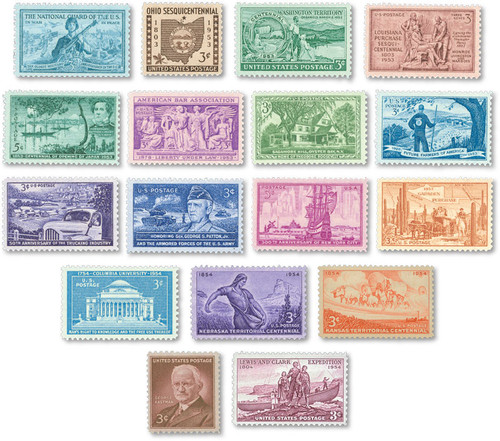
1953 3¢ Louisiana Purchase
# 1020 - 1953 3¢ Louisiana Purchase
$0.35 - $22.00
U.S. #1020
3¢ Louisiana Purchase
3¢ Louisiana Purchase
Issue Date: April 30, 1953
City: St. Louis, MO
Quantity: 113,990,000
Printed by: Bureau of Engraving and Printing
Printing Method: Rotary Press
Perforations: 11 x 10½
Color: Violet brown
City: St. Louis, MO
Quantity: 113,990,000
Printed by: Bureau of Engraving and Printing
Printing Method: Rotary Press
Perforations: 11 x 10½
Color: Violet brown
Issued to commemorate the 150th anniversary of the Louisiana Purchase, U.S. #1020 pictures Karl Bitters sculptured plaque of James Monroe, Robert R. Livingston, and Francois Barbe Marbois signing the 1803 Louisiana Transfer in Paris.
U.S. #1020
3¢ Louisiana Purchase
3¢ Louisiana Purchase
Issue Date: April 30, 1953
City: St. Louis, MO
Quantity: 113,990,000
Printed by: Bureau of Engraving and Printing
Printing Method: Rotary Press
Perforations: 11 x 10½
Color: Violet brown
City: St. Louis, MO
Quantity: 113,990,000
Printed by: Bureau of Engraving and Printing
Printing Method: Rotary Press
Perforations: 11 x 10½
Color: Violet brown
Issued to commemorate the 150th anniversary of the Louisiana Purchase, U.S. #1020 pictures Karl Bitters sculptured plaque of James Monroe, Robert R. Livingston, and Francois Barbe Marbois signing the 1803 Louisiana Transfer in Paris.








